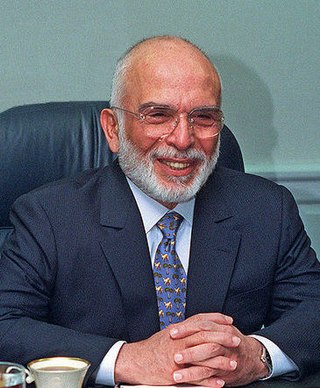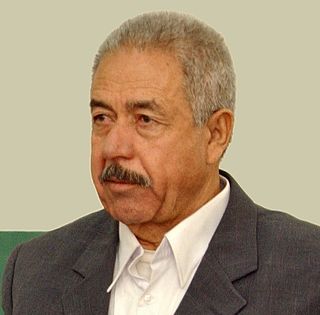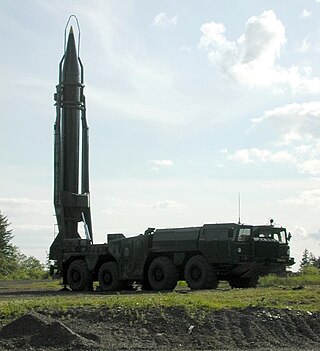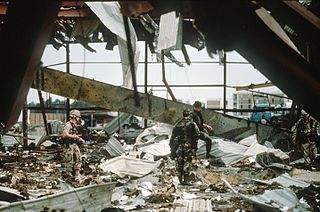
The Iran–Iraq War, also known as the First Gulf War, was an armed conflict between Iran and Iraq that lasted from September 1980 to August 1988. Active hostilities began with the Iraqi invasion of Iran and lasted for eight years, until the acceptance of United Nations Security Council Resolution 598 by both sides. Iraq's primary rationale for the attack against Iran cited the need to prevent Ruhollah Khomeini—who had spearheaded the Iranian Revolution in 1979—from exporting the new Iranian ideology to Iraq. There were also fears among the Iraqi leadership of Saddam Hussein that Iran, a theocratic state with a population predominantly composed of Shia Muslims, would exploit sectarian tensions in Iraq by rallying Iraq's Shia majority against the Baʽathist government, which was officially secular and dominated by Sunni Muslims. Iraq also wished to replace Iran as the power player in the Persian Gulf, which was not seen as an achievable objective prior to the Islamic Revolution because of Pahlavi Iran's economic and military superiority as well as its close relationships with the United States and Israel.

The MIM-104 Patriot is a surface-to-air missile (SAM) system, the primary such system used by the United States Army and several allied states. It is manufactured by the U.S. defense contractor Raytheon and derives its name from the radar component of the weapon system. The AN/MPQ-53 at the heart of the system is known as the "Phased Array Tracking Radar to Intercept on Target," which is a backronym for "Patriot". In 1984, the Patriot system began to replace the Nike Hercules system as the U.S. Army's primary high to medium air defense (HIMAD) system and the MIM-23 Hawk system as the U.S. Army's medium tactical air defense system. In addition to these roles, Patriot has been given a function in the U.S. Army's anti-ballistic missile (ABM) system. As of 2016, the system is expected to stay fielded until at least 2040.

Hussein bin Talal was King of Jordan from 11 August 1952 until his death in 1999. As a member of the Hashemite dynasty, the royal family of Jordan since 1921, Hussein was a 40th-generation direct descendant of the Islamic prophet Muhammad.

The Gulf War was an armed conflict between Iraq and a 42-country coalition led by the United States. The coalition's efforts against Iraq were carried out in two key phases: Operation Desert Shield, which marked the military buildup from August 1990 to January 1991; and Operation Desert Storm, which began with the aerial bombing campaign against Iraq on 17 January 1991 and came to a close with the American-led liberation of Kuwait on 28 February 1991.

The Battle of Khafji was the first major ground engagement of the Gulf War. It took place in and around the Saudi Arabian city of Khafji, from 29 January to 1 February 1991.

The Iraqi invasion of Kuwait began on 2 August 1990 and marked the beginning of the Gulf War. After defeating the State of Kuwait on 4 August 1990, Iraq went on to militarily occupy the country for the next seven months. The invasion was condemned internationally, and the United Nations Security Council (UNSC) adopted numerous resolutions urging Iraq to withdraw from Kuwaiti territory. The Iraqi military, however, continued to occupy Kuwait and defied all orders by the UNSC. After initially establishing the "Republic of Kuwait" as a puppet state, Iraq annexed the entire country on 28 August 1990; northern Kuwait became the Saddamiyat al-Mitla' District and was merged into the existing Basra Governorate, while southern Kuwait was carved out as the all-new Kuwait Governorate. By November 1990, the adoption of UNSC Resolution 678 officially issued Iraq an ultimatum to withdraw unconditionally by 15 January 1991 or else be removed by "all necessary means" from Kuwaiti territory. In anticipation of a war with Iraq, the UNSC authorized the assembly of an American-led military coalition.
The military history of Iraq, due to a rich archaeological record, is one of the longest in written human history. The region of Iraq, which used to be Mesopotamia, has been referred to as the "cradle of civilization", and wars of conquest have been recorded in this region as far back as the third millennium BC. Because of its geopolitical dominance and ideology based in world domination, the Neo-Assyrian Empire is by many researchers regarded to have been the first world empire in history. The area possesses strategic value, initially for the rich, fertile agricultural region in the Mesopotamian plain, and more recently for large petroleum deposits and access to the oil-rich Persian Gulf. The present territory of Iraq lacks significant strategic barriers, making it difficult to defend against foreign invasion.
The Arab–Israeli conflict began in the 20th century, evolving from earlier Intercommunal violence in Mandatory Palestine. The conflict became a major international issue with the birth of Israel in 1948. The Arab–Israeli conflict has resulted in at least five major wars and a number of minor conflicts. It has also been the source of two major Palestinian uprisings (intifadas).
The Iraqi Armed Forces are the military forces of the Republic of Iraq. They consist of the Iraqi Army, the Iraqi Air Force, and the Iraqi Navy. Along with these three primary service branches, there exists the Iraqi Counter Terrorism Service and the Popular Mobilization Forces. The President of Iraq acts as the supreme commander as outlined by the constitution.

In violation of the Geneva Protocol of 1925, the Iraqi Army initiated two failed and one successful (1978–1991) offensive chemical weapons (CW) programs. President Saddam Hussein (1937–2006) pursued the most extensive chemical program during the Iran–Iraq War (1980–1988), when he waged chemical warfare against his foe. He also used chemicals in 1988 in the Al-Anfal Campaign against his civilian Kurdish population and during a popular uprising in the south in 1991.

Iraq–Israel relations refer to the bilateral ties between the State of Israel and the Republic of Iraq. Due to Iraq's non-recognition of Israel as a legitimate state since the latter's establishment in 1948, the two countries have not had any formal diplomatic relations. The Hashemite Kingdom of Iraq was a part of the Arab coalition that declared war on and invaded Israel shortly after its establishment, sparking the First–Arab Israeli War, and the two states have since then been in a continuous state of hostilities. Iraqi forces also participated in the Third Arab–Israeli War and the Fourth Arab–Israeli War in 1967 and 1973, respectively.

Iraq–Saudi relations are the bilateral and diplomatic relations between the Republic of Iraq and the Kingdom of Saudi Arabia. Both sovereign states share the Iraq–Saudi Arabia border.

A Scud missile is one of a series of tactical ballistic missiles developed by the Soviet Union during the Cold War. It was exported widely to both Second and Third World countries. The term comes from the NATO reporting name attached to the missile by Western intelligence agencies. The Russian names for the missile are the R-11, and the R-17Elbrus. The name Scud has been widely used to refer to these missiles and the wide variety of derivative variants developed in other countries based on the Soviet design.

al-Husayn was a short-range ballistic missile developed in Ba'athist Iraq. An upgraded version of Scud missile, the al-Husayn was widely used by the Iraqi Army during the Iran–Iraq War (1980–1988) and the Persian Gulf War (1990–1991).

The Gulf War of 1990–1991 included an air campaign, as the air forces of the coalition carried out an extensive aerial bombing campaign from 17 January 1991 to 23 February 1991 against Iraq. Spearheaded by the United States, the coalition flew over 100,000 sorties, dropping 88,500 tons of bombs, widely destroying military and civilian infrastructure. The air campaign was commanded by United States Air Force (USAF) lieutenant general Chuck Horner, who briefly served as Commander-in-Chief—Forward of U.S. Central Command while general Norman Schwarzkopf was still in the United States. The British air commanders were Air Vice-Marshal Andrew Wilson and Air Vice-Marshal Bill Wratten. The air campaign had largely finished by 23 February 1991 when the coalition invasion of Kuwait took place.
Events in the year 1991 in Israel.

Relations between the Arab Republic of Iraq and State of Palestine have historically been close, with Palestinian Liberation Organization supported by the Ba'athist Iraqi regime during the second half of the 20th century, and vice versa, Iraqi Ba'athist regime supported by PLO leadership during the Gulf War. The State of Palestine has an embassy and consulate in Baghdad and Erbil accordingly, but Iraq doesn't have an embassy in Palestine.
The timeline of the Gulf War details the dates of the major events of the 1990–1991 war. It began with the Iraqi invasion of Kuwait on 2 August 1990 and ended with the Liberation of Kuwait by Coalition forces. Iraq subsequently agreed to the United Nations' demands on 28 February 1991. The ground war officially concluded with the signing of the armistice on 11 April 1991. However, the official end to Operation Desert Storm did not occur until sometime between 1996 - 1998. Major events in the aftermath include anti-Saddam Hussein uprisings in Iraq, massacres against the Kurds by the regime, Iraq formally recognizing the sovereignty of Kuwait in 1994, and eventually ending its cooperation with the United Nations Special Commission in 1998.
The Gulf War began on the 2 August 1990, when Iraq invaded Kuwait. The war was fought between the international coalition led by the United States of America against Iraq. Saddam Hussein's rationale behind the invasion is disputed and largely unknown. No Iraqi document has ever been discovered explicitly listing these.

Between 18 January and 26 February 1991, Ba'athist Iraq launched 46 al-Husayn Scud missiles against Saudi Arabian and American military targets in Dhahran and the Saudi capital of Riyadh amidst the Gulf War. Attacks began hours after US General Norman Schwarzkopf emphasized large-scale efforts taken to comb the vast expanses of western Iraq for missile attacks aimed at Israel. Although the attacks were largely inaccurate, the missiles caused 28 of the 148 United States battle deaths during the Gulf War. Most of the 37 Iraqi ballistic missiles fired at Saudi Arabia were aimed at military targets, inflicting a very casualties on civilian populations.














